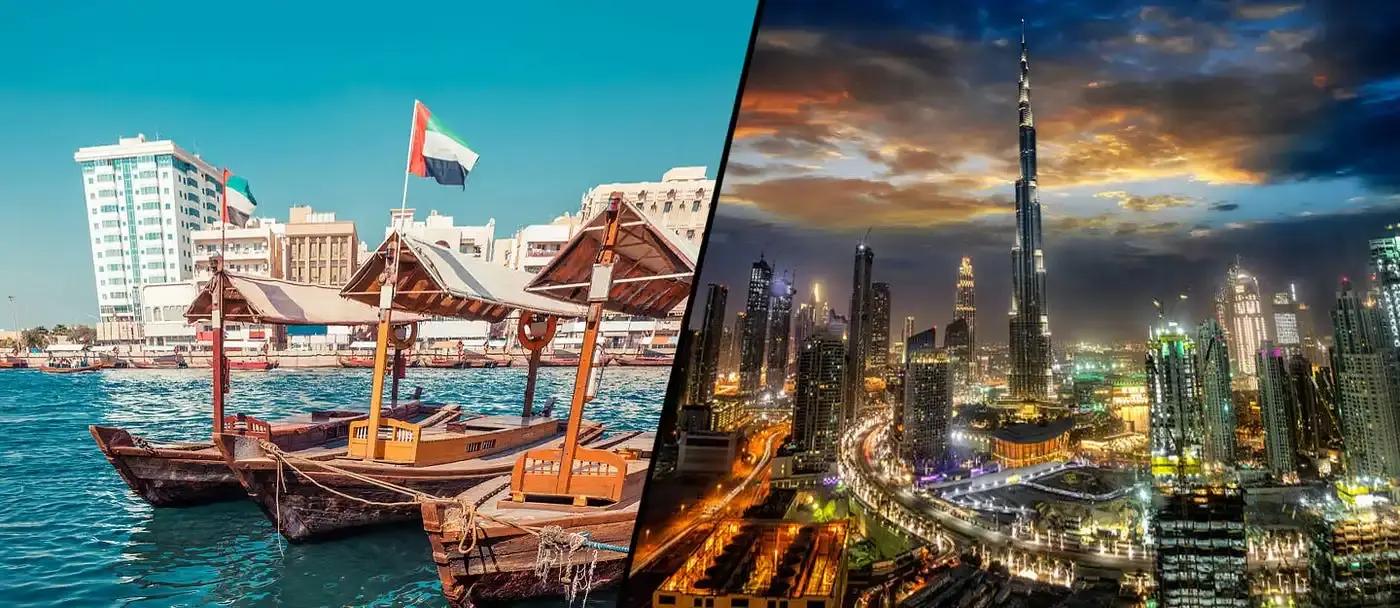
Historical Development of Dubai
Once characterized by sand and desert, today impressive skyscrapers rise into the sky of Dubai. Hardly any other city has experienced such rapid development. But what is behind this remarkable transformation from a small fishing village to a vibrant metropolis? Here are some important milestones:
Early development
The history of Dubai dates back to at least the 4. millennium BC. Archaeological excavations document the first settlements in the Bronze Age and the development of important trade routes to India.
The local population originally lived from fishing and date palms. From 1870, however, pearl fishing became the most important economic sector and Dubai rose to become the leading port on the Gulf coast. In 1904, Dubai was declared a free port after Persian merchants founded the Bastakiya district and British merchant ships regularly called at the port.
Oil boom and transition to modernity
Around 1920, Dubai continued to develop into an international trading center and while the pearl trade collapsed, the search for crude oil was launched for the first time. In the second half of the 20th century, the oil trade became the Emirates’ primary source of income and in 1962 Abu Dhabi exported oil abroad for the first time. In 1969, Dubai began producing and exporting oil. In order to promote trade and economic growth, Dubai began building basic infrastructure such as roads and ports and developed into an important trading hub in the region.
Significant turning point in the history of Dubai: On December 2, 1971, 6 sheikhdoms merged to form the United Arab Emirates (UAE) on the initiative of the Emirates of Abu Dhabi and Dubai. One year later, Ras Al Khaimah joined the federation as the 7th emirate. Under the leadership of the then head of the Emirate of Dubai, Rashid Bin Saeed Al Maktoum, extensive development measures were initiated on the basis of a concrete master plan, such as the construction of bridges, roads and residential areas as well as the establishment of health and educational facilities.
Boom in the 2000s: In the meantime, standardized construction projects and the establishment of tourism have overtaken the oil sector and the government actively promoted a massive construction boom from the late 1990s and early 2000s. This gave rise to world-famous projects such as the Burj Khalifa, the tallest building in the world, and Palm Jumeirah, the artificial island group in the shape of a palm tree.
Since 2006, the Emirate of Dubai has been led by Sheikh Mohammed bin Rashid Al Maktoum, who is also Prime Minister and Vice President of the UAE. Under his master plan, Dubai is set to become a luxury and high-tech metropolis.
Future as a smart city
“Only the best is good enough. Dubai will never settle for anything less than first place.”
His Highness Sheikh Mohammed bin Rashid Al Maktoum
Vice President and Prime Minister, Ruler of Dubai
Dubai’s future will be characterized by:
- Digitalization of many areas
- Innovation
- Leading commercial and financial center
- Dubai Clean Energy Strategy
- Driverless and climate-neutral local transportation via cab drones
- City of innovation: “City of the future”: leading center for research and development in new economic sectors